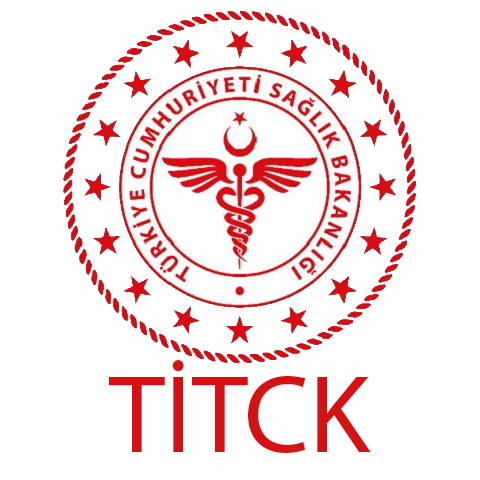
TIANEPTINE
GAS STATION HEROIN, ZAZA, TIANAA, NEPTUNE’S FIX, PEGASUS
Prof. Dr. F. Cankat Tulunay
This month, the FDA’s publication of a new warning once again drew attention to Tianeptine. Tianeptine is an antidepressant drug sold in some countries including Turkey.
Tianeptine could not obtain authorization in the USA; it is sold more often as a dietary supplement or illegally, but it is not in controlled substance status.
Although it is completely banned in some states, it is especially freely sold at gas stations and contains 3–11 mg of tianeptine. The FDA stated that tianeptine is associated with an increasing number of adverse events including death, and characterized its use, especially among young people, as a dangerous and growing health trend the country is facing. Other adverse events reported by the agency include coma, agitation, confusion, high blood pressure, respiratory depression, rapid heartbeat, and vomiting.
Although in countries where it is authorized the maximum daily usage dose of tianeptine is 37.5 mg, in the USA it can be used at doses ranging from 50 to 10,000 mg.
Tianeptine has not been approved by the U.S. Food and Drug Administration for any medical use.Nevertheless, sellers make dangerous and unproven claims that tianeptine can improve brain functions and treat anxiety, depression, pain, opioid use disorder, and other disorders. Moreover, the data collected by the FDA between 2015–2022 show that adverse events such as anxiety, cardiac disorders, addiction, depression, nausea, and withdrawal have been reported associated with tianeptine use. (FDA reference)
Tianeptine is not a drug approved for all countries by the EMA (European Medicines Agency). It is used in some European countries.Tianeptine is sold in Turkey under the name STABLON under green prescription status. Possible side effects include: suicide, dizziness, nausea, insomnia, temporary loss of consciousness (lipothymia), drowsiness, insomnia, nightmares, agitation, tension, tremor, vertigo, headache, back pain, muscle pain, extrasystoles, and tachycardia. In the original French leaflet of Stablon, the suicide-inducing and dependence-inducing effects are explained in detail
Tianeptine Addiction and Misuse:Tianeptine was first defined as an agent showing antidepressant effects by increasing serotonin reuptake.However, recent studies revealed that tianeptine particularly shows agonist effects on μ-opioid receptors [1,2].Tianeptine is especially a low-affinity but functional agonist at μ-opioid receptors [1].This effect leads to indirect activation of the mesolimbic dopamine system and euphoria formation [3].
These neurochemical changes trigger repetitive usage behavior in individuals and contribute to the development of addiction. At high doses (300–1000 mg/day), opioid-like effects become prominent [2,4]. The rapid absorption and short half-life of tianeptine (approximately 2.5 hours) create the need for frequent dosing, increasing the risk of addiction.
Clinical Observations: In individuals using high doses of tianeptine, symptoms similar to opioid withdrawal have developed: irritability, depression, tremor, anxiety, restlessness, muscle pain, sweating, and insomnia [5]. Clinical reports showed that tianeptine withdrawal is very similar to classical opioid withdrawal [4,5]. Addiction risk is particularly increased in individuals with psychiatric illnesses and a history of substance abuse [2,4]. Reports to U.S. Poison Control Centers showed that tianeptine exposures have significantly increased since 2014 [6].
Scientific Committees’ Warnings Regarding Tianeptine:
1. CDC Report (2014–2017): Between 2014–2017, a significant increase in poisoning cases related to tianeptine was observed in the USA. Most cases occurred in individuals aged 21–40, with symptoms including neurological, cardiovascular, and gastrointestinal signs. In some cases, effects similar to opioid toxicity and withdrawal symptoms were reported. (CDC Report link)
2. FDA Warning (2025): The FDA emphasized that tianeptine is not an approved drug in the USA and warned that some products contain high doses of tianeptine.Use of these products carries serious health risks, especially increasing addiction risk in individuals with a history of opioid use disorder.(FDA Dietary Supplements Link)
3. France: ANSM and Addictovigilance Observations: In France, tianeptine (Stablon®) is closely monitored by both ANSM (French Medicines Agency) and the Addictovigilance network because of its misuse and addiction risk. In 2005, a report prepared by Nancy CEIP-A emphasized the addiction risk of tianeptine and estimated the risk to be 1 to 3 cases per 1,000 patients. In light of these findings, starting from September 3, 2012, secure prescription requirements for tianeptine were implemented, and treatment duration was limited to 28 days. In a study on misuse, the doctor-shopping rate (seeking multiple doctors) for tianeptine was found to be 2.0%, higher than other antidepressants, showing its potential for misuse. Patients at risk of addiction are usually women under 50 years old who have a history of substance misuse and use high doses of tianeptine.Furthermore, medical wandering (visiting multiple doctors) and severe withdrawal periods have been observed in these patients.(ANSM Official Link)
4. Turkey : Clinical Observations: In Turkey, since pharmacovigilance data are not publicly and transparently available and adverse effects are reported very little by doctors, we practically have no serious data for any drug. Adverse effects are usually reported only in clinical trials because they are mandatory. In real-life use, we do not know the real data. Although the Turkish Stablon leaflet states: “Drug abuse/dependence and withdrawal syndrome: If the patient has a history of alcohol or drug dependence, the patient should be kept under very close observation to prevent dose escalation. After discontinuation of tianeptine treatment, some patients have exhibited withdrawal symptoms. Observed events include: anxiety, muscle pain, abdominal pain, insomnia, and joint pain. At the initiation of treatment, the patient must be informed about the risk of a withdrawal syndrome that may occur upon discontinuation of the medication.” (Source - Turkish Medicines Agency link). However, this is a misleading statement: Even in individuals without a prior history of alcohol or drug dependence, Stablon® (tianeptine) can cause dependence.
References:
[1] Gassaway MM, Rives ML, Kruegel AC, Javitch JA, Sames D. (2014). The atypical antidepressant and neurorestorative agent tianeptine is a μ-opioid receptor agonist. Translational Psychiatry, 4(7): e411. doi:10.1038/tp.2014.59
[2] Edinoff AN, Sall S, Beckman SP, et al. (2023). Tianeptine, an Antidepressant with Opioid Agonist Effects: Pharmacology and Abuse Potential, a Narrative Review. Pain Ther., 12(5):1121-1134. doi:10.1007/s40122-023-00539-5
[3] Samaha AN, Garcia-Larrea L, Depoortere R. (2017). The atypical antidepressant tianeptine and its abuse: From pharmacology to clinical concerns. Neuropharmacology, 123:195-207. doi:10.1016/j.neuropharm.2017.06.018
[4] Springer J, Cubała WJ. (2018). Tianeptine Abuse and Dependence in Psychiatric Patients: A Review of 18 Case Reports. Journal of Psychoactive Drugs, 50(3):275-280. doi:10.1080/02791072.2018.1438687
[5] Marraffa JM, Stork CM, Hoffman RS, Su MK. (2018). Poison control center experience with tianeptine: an unregulated pharmaceutical product with potential for abuse. Clinical Toxicology, 56(11):1155-1158. doi:10.1080/15563650.2018.1476694
[6] El Zahran T, Schier J, Glidden E, et al. (2018). Characteristics of Tianeptine Exposures Reported to the National Poison Data System – United States, 2000-2017. MMWR Morb Mortal Wkly Rep., 67(30):815-818. doi:10.15585/mmwr.mm6730a2







